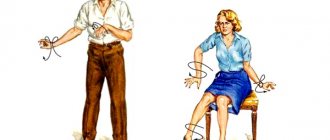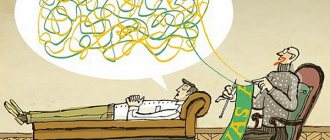Neuralgia refers to severe shooting pain that occurs due to a damaged or irritated nerve. Neuralgia can affect any part of the body, causing mild to severe pain. Certain medications and surgical procedures can effectively treat neuralgia.
Severe neuralgia can affect a person's ability to perform everyday tasks and can affect their quality of life.
Neuralgia has many possible causes, including:
- infections such as shingles, Lyme disease, or HIV
- pressure on bone nerves, blood vessels or tumors
- other medical conditions such as kidney disease or diabetes
- aging
This article examines the different types of neuralgia, their symptoms, and available treatment options.
general information
There are 12 pairs of intercostal nerves in the human body. They originate from the roots of the thoracic spinal cord and cover the entire chest, adjacent to the peritoneum, muscles, skin and mammary glands. The individual fibers of each nerve are responsible for tissue sensitivity, motor function and regulation of the functioning of all structures. Accordingly, damage or inflammation in any area can radiate pain to a variety of parts of the body.
The sensations can imitate diseases of internal organs: myocardial infarction, angina pectoris, pancreatitis, gastritis, cholecystitis, etc. In some cases, only a doctor can accurately determine the nature of the pain after a full examination. That is why it is important to seek help promptly if chest pain occurs.
Make an appointment
What is a pinched sciatic nerve?
The sciatic nerve is the largest in the human nervous system. The sciatic nerve originates in the pelvic area. Passes through the sciatic foramen, through the buttock, and descends to the popliteal cap. Its functions include supplying all the muscles of the lower extremities with nerve impulses, thanks to which movement occurs - a person can walk, run, jump, and so on. Accordingly, when the sciatic nerve is pinched and inflamed, a person experiences problems with movement, and also feels pain that starts from the lower back and goes down to the foot. A pinched nerve is a compression of the nerve that interferes with the normal flow of nerve impulses to organs and tissues. Another name for this disease is sciatica.
Forms
There is no special classification of the disease. There are several separate forms depending on the mechanism of occurrence:
- radicular: associated with irritation of the spinal cord roots at the point of their exit from the spinal column;
- reflex: associated with overstrain of muscle fibers at the site of the nerve passage.
There is also a classification of neuralgia depending on:
- causes: primary (associated with damage or inflammation of the nerve itself) and secondary (due to other diseases);
- localization: unilateral and bilateral;
- course of the disease: acute and chronic.
Causes
The list of main causes of intercostal neuralgia includes:
- degenerative-dystrophic diseases of the spine: osteochondrosis, arthrosis, hernias and protrusions of discs, etc.;
- uneven or excessive load on the spine and back muscles (due to carrying heavy objects, poor posture, etc.);
- spinal column deformities (primarily scoliosis);
- diseases of the nervous system, in particular multiple sclerosis;
- infectious lesions: tuberculosis, herpes zoster, influenza;
- injuries of the spine and chest, surgical interventions in this area;
- tumors in the ribs, sternum, spinal column;
- taking certain medications;
- increased load on the respiratory muscles and abdominal muscles;
- increased intra-abdominal pressure, including during pregnancy.
In addition, intercostal neuralgia can occur secondary to other diseases, for example, pleurisy, pathology of the digestive system, kidney disease, thyrotoxicosis, and immunodeficiency states. Adolescents during the period of active skeletal growth may also experience similar symptoms.
Vasodilator drugs prescribed for osteochondrosis
The work of the muscles of the vascular highways is constantly regulated by nerve impulses passing through sympathetic fibers. These signals are responsible for the muscular activity of almost all internal organs and related functions.
Eliminating stagnation of blood fluid and improving microcirculation in the pathological area makes it possible to normalize metabolic processes and restore the patency of nerve impulses, as a result of which the treatment of osteochondrosis is more effective and the patient’s health condition is stabilized.
Features of the pathogenesis of osteochondrosis disease
Nowadays, osteochondrosis disease (age-related degenerative changes in intervertebral discs) is quite common among the population. This is due to a sedentary lifestyle or, on the contrary, excessively hard physical labor, back injuries, bad habits, poor diet and inadequate sleep.
Initially, the symptoms of osteochondrosis manifest themselves as minor discomfort in the back after physical activity, limited mobility, then pain syndromes become more intense and become chronic. Destructive processes in the intervertebral discs (dehydration and insufficient supply of nutrients) provoke inflammation and swelling of the pathological area (decreased blood circulation in it). The body’s protective reaction to irritation becomes even greater muscle stiffness and pain.
Soft tissue spasms compress sympathetic nerve endings and fibers, the transmission of impulses weakens, the muscle walls of blood vessels do not receive the necessary information and also find themselves in a compressed state. Poor circulation over time leads to oxygen starvation (hypoxia).
Complex conservative treatment of the spine, as a rule, includes taking vasodilating drugs. Results of action of pharmacological agents of the vasodilator group:
- normalization of blood circulation in the pathological area and throughout the body;
- improving the nutrition of soft tissues, saturating them with fluid, accelerating metabolic processes;
- reduction of inflammation and swelling of tissues, congestion and, consequently, pain;
- restoration of the passage of nerve impulses through the fibers.
Mechanisms of drug action
The group of vasodilator drugs used to treat osteochondrosis of the joints is conventionally divided into subgroups:
- substances with myotropic effects that directly affect the muscles of the vascular walls, changing their metabolic processes and reducing tone (caffeine, papaverine, no-spa);
- drugs with neurotropic effects achieve a vasodilating effect through nervous regulation of the tone of blood vessels;
- centrally acting drugs that affect the functioning of the vasomotor center located in the brain (aminazine, apessin);
- peripheral substances:
- blocking vascular adrenergic receptors (phentolamine);
- blocking the transmission of impulses (excitation) from the nerve endings of the sympathetic branches innervating the corresponding blood lines (ornid, octadin);
- improving the transmission of impulses from parasympathetic endings to blood vessels (acetylcholine, carbacholine);
- complicating the transmission of impulses in sympathetic nerve clusters, thereby reducing vascular tone (pentamine, tetamone);
- drugs with a mixed mechanism of action - central neurotropic and peripheral myotropic (nitroglycerin, amyl nitrite, reserpine, the latter weakens the sensitivity of central and peripheral adrenergic receptors responsible for the innervation of blood vessels, expands their lumen, and also lowers blood pressure).
List of main drugs prescribed for osteochondrosis
Actovegin. It has not so much vasodilating properties as stimulating tissue regeneration. It contains many nutrients: amino acids, saccharides, nucleosides. It has a positive effect on the transport, absorption and utilization of glucose and oxygen molecules, and stabilizes the plasma membranes of cells. Restores blood flow in peripheral systems, normalizes and stimulates nutrient metabolism throughout the body, develops and regenerates collaterals (small branches of blood vessels formed during compression or thrombosis of the main channel).
Eufillin. A bronchodilator, it helps relax the muscles of the bronchi, relieves spasms, dilates blood vessels, which makes it indispensable for patients suffering from asthma. Significantly improves blood circulation in the brain and peripheral vessels, and is used to treat diseases of the spine and neurological pathologies. Stimulates the action of the respiratory centers, increases the frequency and intensity of heart contractions, which makes it unsafe for patients with acute heart failure, angina pectoris and cardiac arrhythmias. Can be used for external use in the form of electrophoresis to improve blood microcirculation in pathological areas and restore trophic processes in intervertebral discs.
Pentoxifylline or trental. Improves microcirculation and regenerating properties of blood, thins the blood, reduces total peripheral vascular resistance, dilates the coronary arteries, which accelerates the transport of oxygen throughout the body. By expanding the blood vessels of the lungs, it significantly increases the tone of the muscle fibers responsible for breathing (diaphragm and intercostal muscles). Strengthens collateral blood circulation, increases the concentration of ATP in the brain, and has a beneficial effect on the bioelectrical functions of the central nervous system. The drug is contraindicated in patients with chronically low blood pressure, atherosclerosis and arrhythmia.
Xanthinol nicotinate. Improves cerebral circulation, peripheral (collateral) microcirculation, reduces the manifestations of cerebral hypoxia (insufficient oxygen supply to the brain), normalizes and improves metabolic (metabolic) processes in the brain. Thins the blood and has a beneficial effect on the functioning of the heart.
Thioctic acid, lipoic acid or berlithion. The drug is from a group of vitamin-like substances, similar to those produced by the body, and is close in biochemical properties to vitamin B group. Participates in the regulation of lipid (fat) and carbohydrate metabolism, prevents the deposition of glucose on the walls of blood vessels, improves blood flow and lowers blood viscosity. It has detoxifying properties and has a positive effect on the functions of peripheral nerves and neurovascular bundles innervating internal organs.
Medicines prescribed for cervical osteochondrosis
Symptoms of cervical osteochondrosis primarily affect the blood supply to the brain, the condition of the vertebral arteries, the vertebrobasilar circle, and then can affect the vessels and nerve endings innervating the upper limbs. They are manifested by dizziness, headaches, nausea, coordination disorders, general weakness and fatigue, disturbances in the functioning of the organs of hearing, vision, speech, and smell.
Treatment of cervical osteochondrosis quite often includes nootropic drugs (for example, piracetam, nootropil, vinpocetine), which improve blood circulation in the vessels of the head and improve metabolic processes (carbohydrate and protein) in the brain. They do not always have pronounced vasodilating properties, but they have a beneficial effect on the central nervous system, improve memory, attention, and increase productivity.
Piracetam. It has a positive effect on metabolic reactions in the body, improves blood circulation in the brain, and restores nerve cells. The drug increases energy potential through accelerated ATP metabolism, has a beneficial effect on the central nervous system and is prescribed for diseases of the blood vessels that wash the cerebral cortex.
Vinpocetine. A vasodilator, antihypoxic agent, helps to increase cerebral circulation, especially in ischemic areas by relaxing the smooth muscles of the walls of cerebral vessels. Improves oxygen transport, reduces platelet aggregation and thereby thins blood viscosity.
It is necessary to treat osteochondrosis with complex measures: medications (which, as prescribed by a doctor, may include vasodilators), physiotherapy and physical activity.
The main thing is not to endure the pain, not to delay time, but to contact osteochondrosis treatment clinics in a timely manner. Author: K.M.N., Academician of the Russian Academy of Medical Sciences M.A. Bobyr
Symptoms
The main symptom of intercostal neuralgia is severe pain in the chest along the nerve. As a rule, it occurs suddenly and resembles an electric shock, gradually spreading along the ribs. The nature of the sensations can be different: shooting, pulsating, constant, burning or dull.
Deep breathing, turning the head or body, bending, pressing or simply touching the chest causes a pronounced increase in pain. In addition, characteristic signs of neuralgia are:
- persistence of pain at night;
- the ability to determine the epicenter of pain;
- redness or paleness of the skin in the affected area;
- a feeling of tingling, crawling or, conversely, numbness along the affected nerve;
- slight muscle twitching in the affected area.
As a rule, during an attack of neuralgia, a person tries to lie or sit motionless in a position in which the pain becomes slightly less.
If the cause of the pain syndrome is herpes zoster, first redness appears on the skin along the affected nerve, then numerous blisters that burst, forming crusts. After recovery, increased pigmentation remains in this area for some time.
Differences from myocardial infarction
Chest pain, especially on the left, can be a consequence not only of intercostal neuralgia, but also of more serious problems. The most dangerous is myocardial infarction. This condition requires emergency medical attention. The characteristic differences in pain are:
- occurrence against the background of physical, less often psycho-emotional stress;
- spread to the left arm, shoulder, left half of the neck and lower jaw;
- no changes when turning the body, bending, pressing on the sore area;
- decreased intensity when taking nitroglycerin and its analogues.
A heart attack is often accompanied by cold, sticky sweat, pale skin, dizziness, and fear of death.
It is important to remember that the signs of a cardiovascular accident and intercostal neuralgia are not always so radically different. An accurate diagnosis can only be made by a doctor.
Diagnostics
Intercostal neuralgia, regardless of the severity of the pain syndrome and its location, requires a full diagnosis. The following examinations will help distinguish it from other pathologies:
- questioning and medical history: identifying the nature of the sensations, the conditions of their occurrence, the duration of the attack, concomitant diseases;
- examination and palpation: the doctor evaluates the appearance of the skin, checks the reaction to movements, pressing, turning, bending, assesses the severity of reflexes;
- laboratory diagnostics: general and biochemical blood tests, general urine tests: allows to identify signs of damage to the heart muscle (tests for troponins, CPK), inflammation, renal pathology, gastrointestinal diseases, etc.; the exact set of tests depends on the location of the source of pain;
- ECG, ultrasound of the heart: allow you to identify or exclude cardiovascular pathology;
- X-ray, CT or MRI of the thoracic spine: helps to identify osteochondrosis, osteoporosis, tumors, hernias and protrusions of intervertebral discs, etc.;
- Chest x-ray: allows you to assess the condition of the lung tissue and identify signs of tumors;
- Ultrasound of the kidneys, abdominal organs (excludes relevant pathology);
- FGDS to exclude pathologies of the esophagus, stomach, duodenum;
- myelography, contrast discography, electrospondylography to assess the condition of the spine, intervertebral discs, spinal cord and its roots.
If necessary, consultations with narrow specialists and additional examinations are prescribed.
Make an appointment
Treatment
Intercostal neuralgia requires complex and often long-term treatment, including medication, physiotherapy, massage, etc.
Drug therapy
In the acute phase of the disease, therapy is aimed at relieving pain and improving the patient's condition. Depending on the specific clinical situation, the following are prescribed:
- non-steroidal anti-inflammatory drugs (NSAIDs): products based on diclofenac, nimesulide, ibuprofen, meloxicam and their derivatives; used in tablet, injection and local (creams, ointments, patches) form;
- analgesics: analgin and products based on it; like NSAIDs, they relieve pain;
- muscle relaxants to eliminate muscle spasms: mydocalm, etc.;
- group vitamins: milgamma, neuromultivitis, etc.; necessary to restore normal functioning of nerve fibers;
- sedatives to reduce the psycho-emotional component of pain and improve sleep.
If necessary, the following may additionally be prescribed:
- anticonvulsants: inhibit the passage of pain impulses;
- antidepressants to relieve tension;
- antihistamines and diuretics: relieve tissue swelling, especially relevant for pinched nerve roots;
- antiviral drugs for herpes zoster;
- glucocorticosteroids for persistent pain and severe inflammation that cannot be relieved by milder means.
Physiotherapy and exercise therapy
Physiotherapeutic procedures are prescribed after the acute pain subsides. Help speed up recovery:
- UHF;
- reflexology;
- magnetic therapy;
- electrophoresis;
- laser treatment;
- paraffin applications;
- mud therapy.
These procedures help improve blood circulation and metabolism in the affected area and accelerate the regeneration of nerve tissue.
Physical therapy exercises are prescribed after complete recovery. The main goal of gymnastics is to unload the back muscles. The complex is developed individually. The first classes should be carried out under the supervision of a specialist; in the future, home exercises are allowed.
Other treatments
Since very often the cause of intercostal neuralgia is pathology of the spine and spinal cord, the following are often used as additional methods of influence:
- acupuncture;
- manual therapy;
- therapeutic massage, including the use of warming agents;
- Shiatsu massage (acupressure);
- osteopathy;
- underwater traction and other techniques.
Like all medical procedures, these techniques are used only in a clinical setting and are carried out by specialists with medical education and the appropriate certificate.
Centrally acting muscle relaxants
According to systematic reviews, combined treatment with NSAIDs and centrally acting muscle relaxants is more effective than NSAID monotherapy. The use of muscle relaxants is accompanied by an increase in the frequency of adverse events, primarily general lethargy and drowsiness. The most studied drug is tizanidine. The drug is used in doses of 2-4 mg x 2 times a day. The most common adverse events are sedation and hypotension.
Benzodiazepine tranquilizers have a similar effect. Drugs in this group can be used in a hospital setting to enhance the effect of NSAIDs.
Complications
Complications of intercostal neuralgia occur quite rarely, however, in severe cases, without appropriate treatment, the patient may encounter the following problems:
- severe spasm of the respiratory muscles, limiting inhalation and exhalation;
- inability to get out of bed due to significant increase in pain;
- excessive pain syndrome that is not relieved by conventional analgesics and NSAIDs;
- heart rhythm disturbances due to muscle spasms and nerve pathology;
- decreased leg mobility.
In addition, complications can be caused by attempts to be treated outside the clinic. Abscesses and cellulitis after acupuncture, paralysis and decreased sensitivity after manual therapy are not a complete list of problems. That is why you should not treat intercostal neuralgia either independently or with the help of dubious specialists.
When is injection therapy prescribed?
It must be said that injections for a pinched sciatic nerve are not prescribed immediately. That is, when the first signs of the disease appear, neurologists
(provided that the patient took care of his health and came to the appointment after the first symptoms of the pathology) they begin therapy with painkillers, anti-inflammatory drugs, and also prescribe massage courses and physiotherapeutic procedures. If a positive effect cannot be achieved for some time, the pain does not go away, but becomes stronger and occurs more often, the question of prescribing injections arises.
Prevention
Prevention of intercostal neuralgia is mainly general measures aimed at strengthening the muscle frame and improving the health of the body. Neurologists recommend:
- lead an active lifestyle, play sports at an amateur level;
- minimize hypothermia and colds;
- watch your posture;
- avoid lifting heavy objects;
- maintain a high level of immunity;
- eat a balanced diet, if necessary, take additional vitamins, especially group B;
- treat chronic diseases in a timely manner;
- avoid stress, get proper rest and ensure yourself at least 8 hours of sleep every night.
Following these simple rules will significantly reduce the risk of developing intercostal neuralgia.
Where to get injections of B vitamins in St. Petersburg?
MRI and ultrasound center RIORIT
Area:
Kalininsky
Metro:
metro station Grazhdansky Prospekt, metro station Devyatkino, metro station Prospekt Prosveshcheniya
Address:
St. Petersburg, Kalininsky district, st. Rustaveli, 66 lit. G
Telephone:
Equipment:
Siemens, open type
Schedule:
Around the clock
Vitamin B deficiency
Vitamin B9 (folic acid) is a water-soluble vitamin. It is especially necessary for women during pregnancy for...
read more
Vitamin B deficiency
Vitamin B1 (thiamine) is a water-soluble vitamin, one of the most famous of the entire B group. Vitamin B1 deficiency ...
read more
Vitamin B deficiency
Vitamin B6 (pyridoxine) is a water-soluble vitamin. In pharmacies it is often sold in the form of ampoules with a solution. Case …
read more
Treatment at the Energy of Health clinic
Doctors at the Energy of Health clinic will always come to the aid of patients with intercostal neuralgia. We offer each client:
- a full examination with consultations with specialists for an accurate diagnosis;
- individual selection of treatment regimen;
- services of a qualified chiropractor;
- own exercise therapy room for the most effective and safe exercises;
- modern methods of physiotherapy;
- massotherapy;
- drug blockades for severe pain syndrome.
Regular observation by a neurologist after the acute period of the disease has subsided will help prevent recurrent attacks.
Advantages of the clinic
In the neurology department of the Energy of Health clinic, every patient receives the highest level of specialists and modern equipment for diagnosing and treating diseases. We take an integrated approach to therapy and use not only medications, but also physiotherapy, exercise therapy and massage.
Treatment is prescribed only after a thorough examination and is monitored by a specialist until the patients fully recover. Adequate prices, convenient location, private parking - we do everything for the convenience of our clients.
If intercostal neuralgia interferes with living, walking and moving, do not delay treatment. Sign up for the Health Energy clinic and get rid of pain.
Vitamin B6 and carpal tunnel syndrome
Sometimes it happens that a person wakes up with a feeling of numbness in the fingers. Neurologists call this condition tunnel syndrome. The cause of this disease lies in the wrist area, where there is a special canal (tunnel) through which the median nerve passes. It innervates the second, first and third fingers of the hand, and thanks to this nerve, these three fingers sense and carry out movements. In people with a certain type of activity, when the load is placed on the hand or the work is accompanied by vibration, the transmission of impulses along the median nerve is disrupted, and the fingers become numb as a result. To treat carpal tunnel syndrome, the doctor may prescribe a course of vitamin B6 injections and physical therapy. Using a needle, a drug containing B6 is injected directly into the tunnel, as a result of which inflammation, numbness and pain go away. Typically, for carpal tunnel syndrome, 3 to 5 injections are given, and such therapy has a very long-lasting effect.











